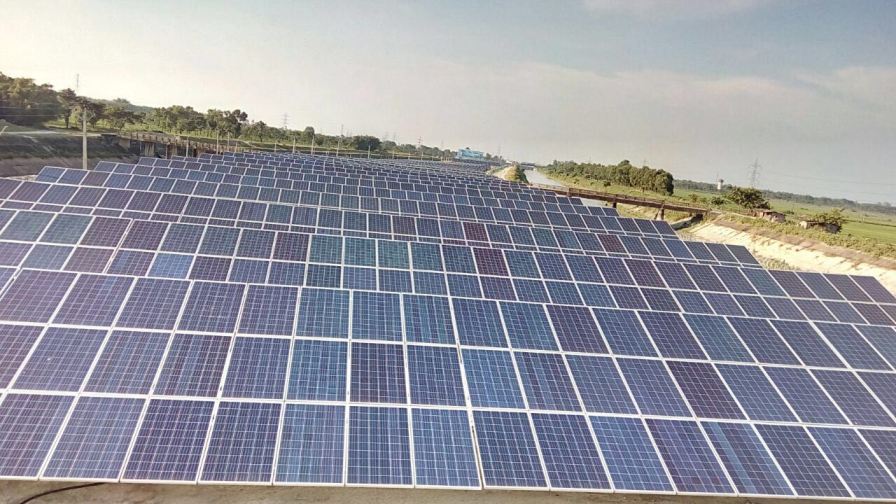India added 10 GW of solar capacity in calendar year 2021, according to the to the newly released Q4 & Annual 2021 India Solar Market Update by Mercom India Research.
The achievement in 2021 was more than three times the 3.2 GW added in 2020, Mercom said. During CY 2021, large-scale solar projects accounted for 83 per cent of the total installations and saw a 230 per cent year-on-year surge. Rooftop installations more than doubled in CY2021, on a year-on-year basis.
Installations in 2021 were boosted by the spillover of projects that were scheduled to commission in 2020 but could not due to COVID19 restrictions, the report said.
Challenges exist
“Solar installations in India in 2021 were the highest ever with the country breaching 10 GW for the first time in a year. Demand outlook for 2022 is strong, but significant challenges await the industry, beginning with the basic customs duty, import restrictions, and the goods and services tax on top of global supply chain issues, and high component prices. Challenges aside, the Indian solar market has significant growth potential and is only just starting to take off,” said Raj Prabhu, CEO of Mercom Capital Group.
According to the report, the growth outlook going into 2022 remains strong, despite the Great Indian Bustard pending judgment and module supply constraints due to the Approved List of Models and Manufacturers (ALMM) mandate.
Cost of projects
The report highlights a rise in the average cost of projects in CY 2021 due to higher module, raw material prices and freight charges. Average large-scale project costs in Q4 increased 21.6 per cent year-on-year in 2021 – the highest ever rise over the past ten years. Average rooftop solar costs in Q4 2021 rose 14.8 per cent year-on-year.
Solar tenders
In 2021, solar tenders dipped 4.3 per cent year-on-year and auctions fell 2.6 per cent compared to 2020. The delay in signing power sale agreements (PSA) and lack of clarity regarding applicable duties were some of the reasons for the slowdown in tender and auction activity.
BCD to take effect
The Basic Customs Duty (BCD) introduced in March 2021 by the Government of India, and the expiration of the Safeguard Duty in July 2021 spurred import activity. The report noted that developers are procuring solar cells and modules in large quantities and stockpiling them ahead of the steep BCD that takes effect April 1, 2022. The industry is uncertain if discoms will procure solar at higher prices when the 40 per cent BCD becomes effective.
Also read: India Adds 4.6 GW Of Solar Capacity In H1 Of 2021, Says Mercom Report
Overall position
India’s installed renewable energy capacity, including large hydro projects, stood at 150.9 GW, accounting for 38.4 per cent of the overall power mix at the end of December 2021. Newly installed solar capacity in 2021 reached a new high, making up 62 per cent of all power capacity installed in 2021.
Solar now accounts for 12.4 per cent of India’s total installed power capacity and 32 per cent of the total installed renewable capacity as of 2021. It is now India’s top renewable energy generation source and has surpassed large hydro. Wind and solar together made up 71 per cent of new power capacity additions in 2021.
Rajasthan, Karnataka, and Andhra Pradesh were the top three states for cumulative large-scale solar capacity accounting for 50 per cent of installations in the country as of December 2021. In 2021, Rajasthan led capacity additions with 4.5 GW of solar.

